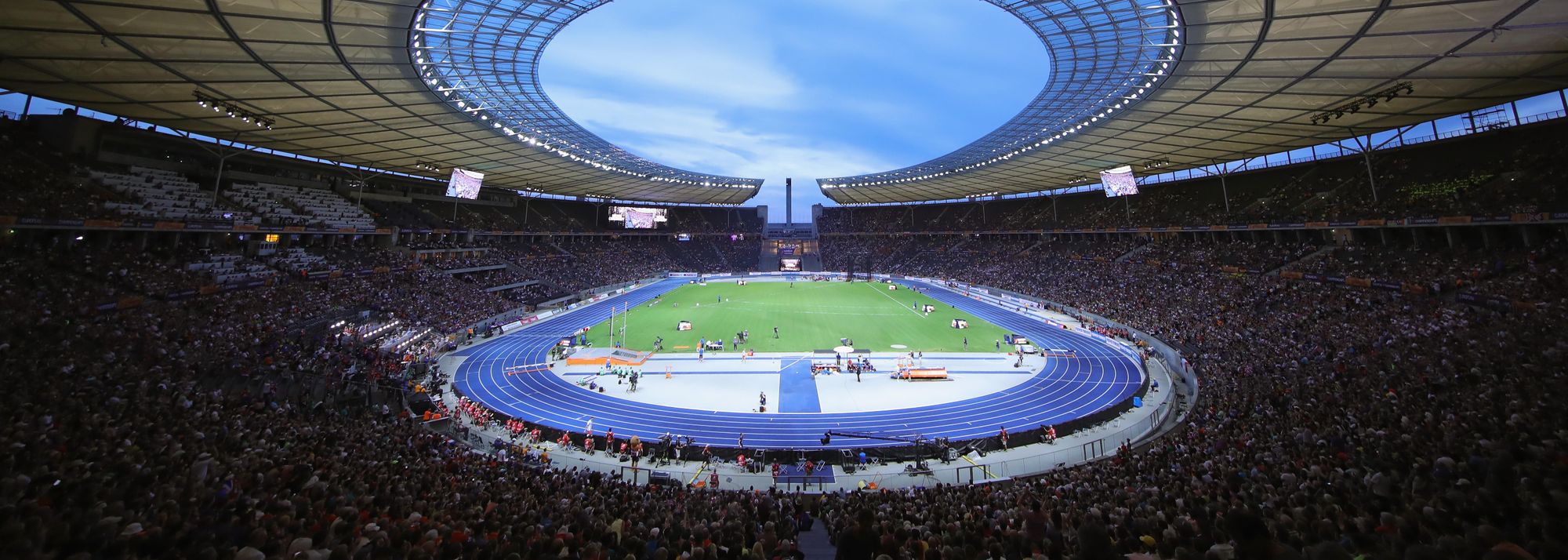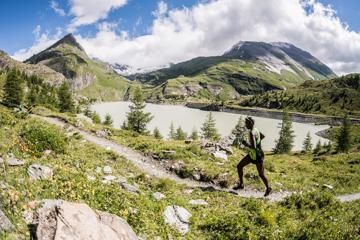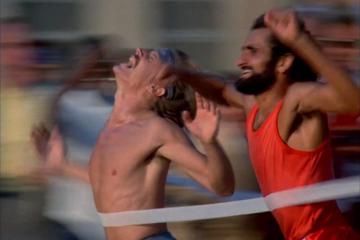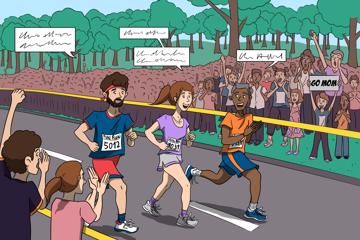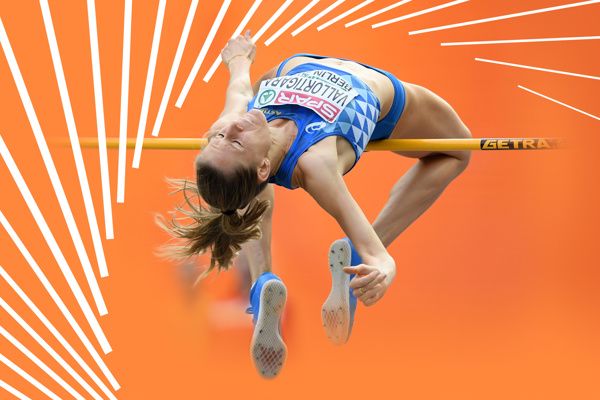Berlin's Olympiastadion (© Getty Images)
Athletics takes place all over the world. But there are some places in the world – and in particular, some stadiums – that are steeped in historic track and field deeds, unique to that space, creating a uniquely rewarding experience for visiting followers of the sport.
All around the globe, athletics has its own cathedrals, places such as the Berlin Olympiastadion, the Letzigrund in Zurich, the Shanghai and Bird’s Nest stadiums in China, and Hayward Field in Eugene, Oregon – the latter currently in the midst of having aisles, nave and steeple completely rebuilt.
In such arenas, you focus on the inside lines of the track at the finish line. It’s like staring at the Wembley Stadium goalposts. Here, right here, is where runners have felt the surging emotions of victory in world, European or Olympic competition. Or, a little later, the gutting drag of defeat.
Olympiastadion, Berlin
There is no more monumental an example of one of these athletics cathedrals than Berlin. Built to host the 1936 Olympics, it will forever be associated with the memory of Jesse Owens, the black US sprinter and jumper whose achievement of winning four gold medals defied the vision of the Games by the German Fuhrer, Adolf Hitler, as a showpiece for the Nazi Party’s racist ideology.
Those memories and images have since been overlaid with other vivid events.
There are huge footballing reverberations – this stadium hosted FIFA World Cup matches in 1974 and 2006, including the 2006 final (as you look out across the infield, try and guess exactly where France’s Zinedine Zidane was goaded into butting Italy’s Marco Materazzi before being sent off…).
In 2009 it hosted one of the most memorable World Athletics Championships, where Jamaica’s Usain Bolt, at the high point of a dizzying career, set the current world 100m and 200m records of 9.58 seconds and 19.19 respectively.
Last year’s European Championships were another landmark event, as 18-year-old Armand Duplantis won the pole vault gold for Sweden with a vault of 6.05m, and Norway’s 17-year-old Jakob Ingebrigtsen took the 1500m and 5000m titles.
With its giant bowl of an arena set 12 metres below ground level, the stadium was renovated, but not rebuilt, in 2004. So while the interior looks and feels like something out of the modern day, a step outside takes you back more than 80 years. All the monumental features of the original, put together according to Hitler’s personal wishes, have been retained.
Such is the richness of this sporting arena’s history that you can go on conducted tours even when no competition is taking place. So you can arrive at the stadium between the twin towers of the Olympic Gate – both still inscribed with the Olympic rings, but with one no longer sporting its original Swastika.
Next to this entrance is the Podbielski Oak – named after politician Viktor von Podbielski, one of the original planners of the Olympic Games originally destined for Berlin for 1916. The oak was for Germany what the olive was for the hosts of the first modern Games in Greece, and winners at the 1936 Games received an oak wreath and seedlings.
You can take in the Bell Tower, reconstructed in 1962 after the initial version was set alight by invading Red Army forces in 1945. You can take in the monumental sculptures of men and horses on the stadium’s perimeter.
There are pictures taken during the Games of winner’s names being inscribed in the vast panels either side of the opening to the stadium at the Marathon Gate end by a craftsman working on a gantry. Nowadays you have to peer up to where he was. The Olympische Sieger lists are complete; set in stone.
From there you can gaze past the cauldron which housed the Olympic flame, poised high on the rim of the stadium. At that moment on 1 August 1936, where you are standing was a global epicentre of interest.
You can also get to where the 1936 podium was, right where Jesse Owens stood, and look across to the specially-built box where Hitler sat.
In later years, the story was told – and not always discouraged by Owens himself – of how Hitler had snubbed him by refusing to shake his hand after his victories, his form of congratulation for German winners.
This was not so. Hitler had indeed shaken hands with all the German victors on the first day of competition, and with the three medal winners in the 10,000m, who were all from Finland, his future allies in the Second World War.
But Olympic officials then insisted he acknowledge publicly either all winners or none. Hitler chose the latter course.
 Getting to the Olympiastadion
Getting to the Olympiastadion
Olympiastadion is located in the west of Berlin, almost seven kilometres from the western end of the Kurfürstendamm, and 10 kilometres from the Brandenburg Gate and Berlin’s main railway station, Hauptbahnhof. It is part of the Olympic Park, which includes other sports facilities.
The stadium can be easily reached by metro (U-Bahn). Take either line U2 or U12, which both can be boarded at several points in the city centre. Get off at stop Olympia-Stadion. It takes about 25 minutes to reach the stadium from Potsdamer Platz, and about 15 minutes from Zoologische Garten.
Alternatively, you can get to the stadium by commuter rail (S-Bahn). Take either line S5 or S75 to station Olympiastadion. Both lines link the stadium with Berlin’s major railway stations in the centre, as well with station Spandau in the west.
Letzigrund Stadium, Zurich
Zurich’s Letzigrund Stadium, whose Weltkasse meeting has formed one of the two Diamond League finals since 2010, will become the sole venue for the 2020 and 2021 finals.
Such is its depth of quality that the Weltkasse is known by some as the ‘Two-Hour Olympics’. And by others as ‘The Three-Hour Olympics’. Anyway, you get the picture.
By the time the stadium originally constructed in 1925 was re-built in 2007, it had established a huge sequence of spectacular performances. And while only one world record has been set there since – Yelena Isinbayeva’s pole vault clearance of 5.06m in 2009 became the 25th on the list – the level of entertainment has been maintained at the same giddy level.
The new stadium fills roughly the same footprint as the old. You can still hear the drumming of palms on the advertising boards, offering encouragement or approval, even if it lacks some of the deafening levels the old acoustics enabled. You can still get a beer or a meal at the little corner café across the road, or sausages and mustard at the numerous stalls set up around.
This is where Armin Hary of Germany set the 100m world record of 10.00 in 1960, and where Britain’s Sebastian Coe broke the 1500m and mile world records in 1979 and 1981 respectively, running 3:32.1 and 3:48.53.
And where, in 1997, three world records were set on a single night as Haile Gebrselassie ran the 5000m in 12:41.86, Kenya’s Wilson Boit Kipketer set a time of 7:59.08 in the 3000m steeplechase, and Wilson Kipketer of Denmark ran an 800m time of 1:41.24.
 Getting to the Letzigrund
Getting to the Letzigrund
Letzigrund is located toward the west of the city of Zürich, about 2.5 kilometres from Zürich’s city centre and 500 metres more from the main railway station.
The stadium can be reached from the city centre with tram 2. Take the tram from Paradeplatz in the direction of Farbhof. Get off at stop Letzigrund. Trams run very regularly and the journey takes just over 10 minutes.
From the main railway station (Hauptbahnhoff) you can take tram 3 toward Albisrieden or tram 14 toward Triemli. Get off at stop Stauffacher, and change to a tram 2. You can also take tram 3 to Albisriederplatz and walk 5 to 10 minutes from there to the stadium.
Hayward Field, Eugene
If you’re looking for an iconic athletics stadium to visit in the United States, you need look no further than Hayward Field, on the campus of the University of Oregon in Eugene – although you will need to wait until next year.
Originally constructed in 1919, and later named after track coach Bill Hayward, who died in 1947, the stadium is one of only five class-1 certified tracks in the United States, and is in the process of being completely rebuilt in time to host the World Athletics Championships in 2021.
The arena has hosted numerous US Championships and Olympic trials since 1972, as well as the annual Prefontaine Classic as part of the Diamond League programme.
For many, the mention of Hayward Field conjures the image of the University of Oregon’s late lamented Steve Prefontaine, the man who brought a new freshness, and huge talent, to distance running before missing out on a 5000m medal by one place at the 1972 Olympics and, tragically, dying in a car accident in 1975.
Those connected with Hayward Field have said the new incarnation will be “the finest track and field facility in the world”. The iconic East Grandkstand is now a historical memory, but the new stadium, we are assured, will be a cross between the Beijing Bird’s Nest and the Los Angeles Rose Bowl.
The design includes a nine-story tower topped by an observation deck that will provide a panoramic view of the area and is named the Bowerman Tower in honour of former Oregon coach and Nike co-founder Bill Bowerman.
“We need a facility that will be built for the future,” University of Oregon president Michael Schill said. “And that’s what this is.”
 Getting to Hayward Field
Getting to Hayward Field
Hayward Field is a 30-minute drive from Eugene Airport. From Eugene bus station, take an eight-minute bus ride on the EMX-EUG and get off at ‘Emx Agate Station’ stop.
Be sure to explore the surrounding ‘Track Town’ area, too. You’ll find shops, bars, restaurants and even barbershops with a track and field theme, many with fascinating memorabilia on display. The Wild Duck Café and Track Town Pizza are both worth a visit.
Shanghai Stadium
Since the Shanghai Stadium began hosting Diamond League meetings in 2010, there have been a succession of performances of similar stature to the skyscrapers that are increasingly populating the Pudong skyline in a city of more than 20 million people through which the huge, wide Huangpu River runs.
The second hosting of the Diamond League saw one of the athletics highlights of that year as home athlete Liu Xiang, the 2007 world and 2004 Olympic 110m hurdles champion, held off the challenge of USA’s David Oliver to earn one of the last and most satisfying wins of his career.
The building highlights the city’s rapid development as a tourist location, which was signalled by the 2010 hosting of the World Expo, drawing more than 73 million visitors. Usain Bolt came that year too – but an early morning flight meant he couldn’t drop in at the expo.
 Getting to the Shanghai Stadium
Getting to the Shanghai Stadium
To reach the 56,000-capacity stadium, which was built in 1997 with a distinctive, saddle-shaped roof, take Shanghai Metro Line 4 to the Shanghai Stadium station. But be careful not to go to the next stop, which will instead deposit you at the Shanghai Indoor Stadium.
One ideal way of making sure you see all the action at the stadium is to book in at the hotel that is actually a part of it – the Regal Shanghai East Asia Hotel. Advantage: a very quick transition from hotel room to trackside seat. Disadvantage: a strange sense that you are existing in a dream, where one second you are in a hotel room and the next in a major international sporting venue.

